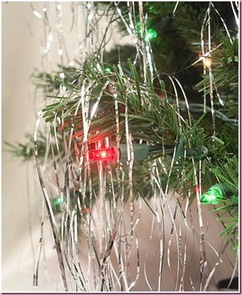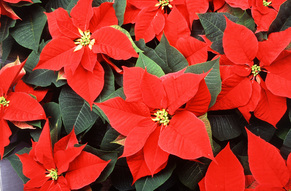CHRISTMAS HOLIDAY TOXINS
Tips on holiday decorations, plants and foods that can put your patients at risk.
By Ahna G. Brutlag, DVM, MS, DABT, DABVT
Associate Director of Veterinary Services, Pet Poison Helpline
Tips on holiday decorations, plants and foods that can put your patients at risk.
By Ahna G. Brutlag, DVM, MS, DABT, DABVT
Associate Director of Veterinary Services, Pet Poison Helpline
HOLIDAY DECOR

Tinsel: Few cats can resist the lure of shiny strings! During the holidays, ribbon, string, yarn, and tinsel pose a significant threat to our feline friends (and less commonly, our canine friends). While these stringy "delicacies" aren't "poisonous," a dangerous linear foreign body can result if they're ingested. A linear foreign body occurs when a cat swallow something "stringy" which wraps around the base of the tongue or anchors itself in the stomach, rendering it unable to pass through the intestines. Due to normal peristalsis, the linear foreign body can slowly saw through the tissue, resulting in an intestinal perforation and potential sepsis.
Liquid Potpourri: The liquid potpourri formulation used in simmer pots typically contains a mixture of cationic detergents and essential oils (even if these are not listed on the product label). Following oral, dermal, or ocular exposure, cationic detergents can result in serious chemical burns/ ulcerations, tissue necrosis, severe inflammation/fever, and dyspnea (from shock or aspiration). Essential oils are well absorbed across the oral or GI mucosa and may result in tissue irritation, central nervous system depression, dermal hypersensitivity and rarely, hepatotoxicity (cats).
Liquid Potpourri: The liquid potpourri formulation used in simmer pots typically contains a mixture of cationic detergents and essential oils (even if these are not listed on the product label). Following oral, dermal, or ocular exposure, cationic detergents can result in serious chemical burns/ ulcerations, tissue necrosis, severe inflammation/fever, and dyspnea (from shock or aspiration). Essential oils are well absorbed across the oral or GI mucosa and may result in tissue irritation, central nervous system depression, dermal hypersensitivity and rarely, hepatotoxicity (cats).
HOLIDAY PLANTS

Poinsettia: Although they have a bad reputation, the relative toxicity of poinsettia plants has been exaggerated. The most problematic components of the plant are the saponin-based irritants found in the milky white sap. As the plant is chewed and sap ingested, mild and self-limiting oral/dermal irritation, salivation, vomiting and diarrhea may result. The majority of cases can be managed at home.
Mistletoe: The common name of "mistletoe" can be misleading as there are many varieties of this plant grown worldwide. The variety under which "couples stop to kiss", is the American Christmas mistletoe. Like the poinsettia, this plant gets a bad rap. Rumors of its toxic nature are largely attributed to its cousin, European mistletoe. Although ingestion of American mistletoe leaves, berries, or extracts may cause mild stomach upset, serious or life-threatening poisoning is extremely rare and not expected following most exposures in pets.
Holly: Prized for its evergreen color and bright red berries, the Christmas or English holly joins its holiday brethren as another overrated toxic plant. The problems caused by holly ingestion are two fold. First, the spiny and leathery leaves can result in mechanical damage and, potentially, a foreign body obstruction of the gastrointestinal tract. Second, the leaves and berries contain saponins, chemicals that have a detergent-like effect on tissue and result in gastrointestinal irritation. Most ingestions can be managed at home.
Mistletoe: The common name of "mistletoe" can be misleading as there are many varieties of this plant grown worldwide. The variety under which "couples stop to kiss", is the American Christmas mistletoe. Like the poinsettia, this plant gets a bad rap. Rumors of its toxic nature are largely attributed to its cousin, European mistletoe. Although ingestion of American mistletoe leaves, berries, or extracts may cause mild stomach upset, serious or life-threatening poisoning is extremely rare and not expected following most exposures in pets.
Holly: Prized for its evergreen color and bright red berries, the Christmas or English holly joins its holiday brethren as another overrated toxic plant. The problems caused by holly ingestion are two fold. First, the spiny and leathery leaves can result in mechanical damage and, potentially, a foreign body obstruction of the gastrointestinal tract. Second, the leaves and berries contain saponins, chemicals that have a detergent-like effect on tissue and result in gastrointestinal irritation. Most ingestions can be managed at home.
HOLIDAY FOODS
Alcohol (ethanal): While pets can certainly be poisoned by scavenging unattended holiday cocktails, there are also some unusual sources of alcohol such as raw yeast bread dough, rum or brandy soaked fruit cakes, and fermenting garbage/fruits. When raw yeast bread dough is ingested, the yeast ferments sugars to carbon dioxide and alcohol, resulting in alcohol poisoning. The signs of alcohol intoxication in pets include severe hypoglycemia, hypothermia, respiratory depression, and hypotension. Additionally, the ingested dough expands in the warm, moist environment of the stomach (acts as an "oven") which can result in gastric dilatation and potentially a gastric-dilatation volvulus (GDV).
